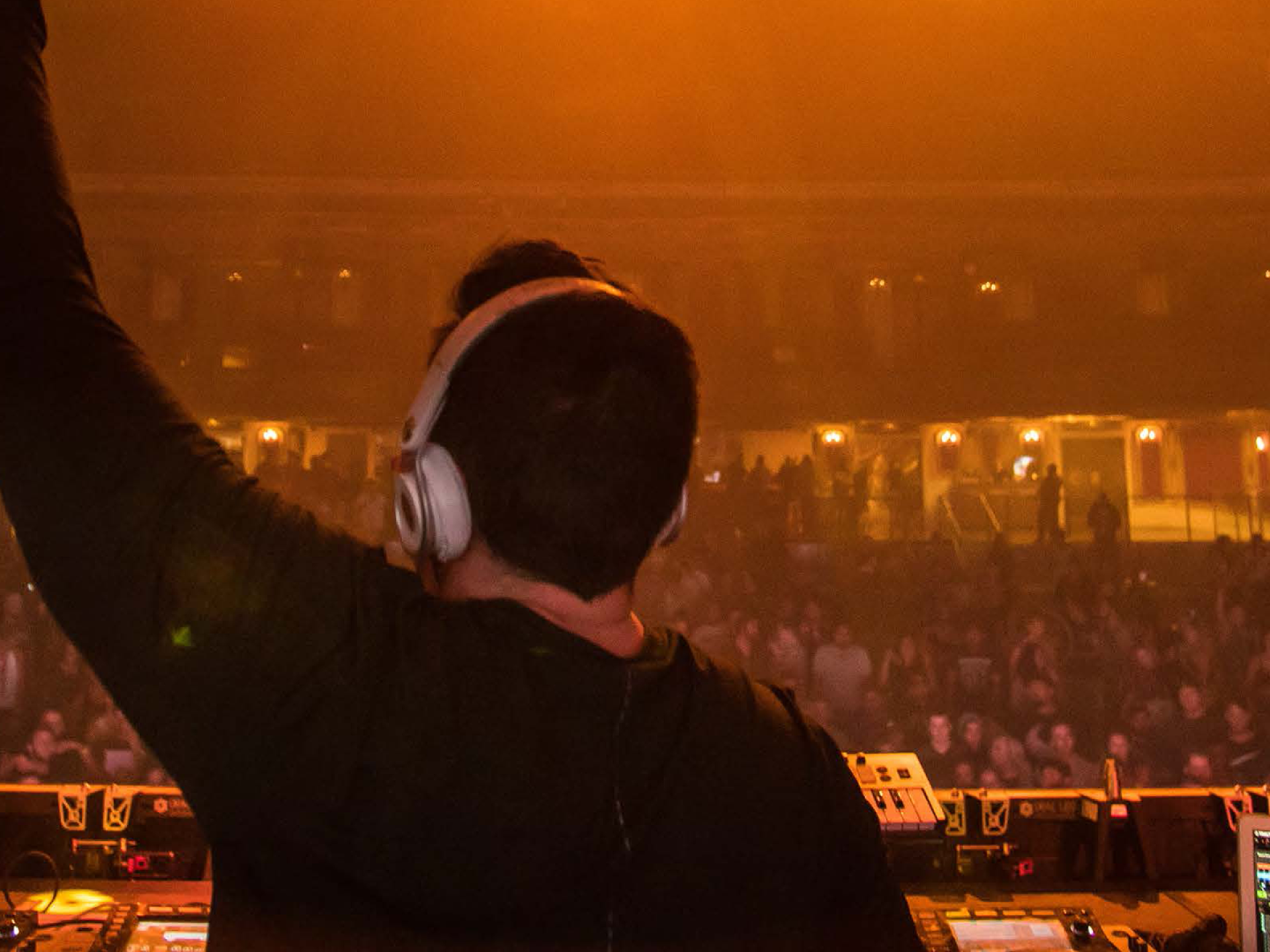April 19, 2018
Longer Days

This article was originally published in Populous Magazine, our biannual publication featuring news, information, and trends from the worlds of sport, entertainment, and major public events. Find out more, and sign up to receive a free copy, here.
Populous architect Adam Paulitsch (aka Longer Days) moonlights as a DJ and musician. Performing to thousands of dance-music fans has given him a precious insight into the design needs of entertainment venues and convention centres.
They used to call him DJ Architekt.
In a previous life, when Adam Paulitsch was studying architecture at the University of Kansas, he used to spin decks at various clubs and bars near campus. Nowadays, as a DJ and music producer, he regularly performs to thousands of dance-music devotees, under the artist name Longer Days. Last year he played to 11,000 fans at a music festival near Kansas City, Missouri, called Dancefestopia. He once opened for Californian musician RL Grime at a famous music venue in Kansas City called the Midland Theatre. The release of the first Longer Days EP is imminent.
But that’s just his evening job. By day, Adam is an architect and associate principal at Populous’s Kansas City office. In recent years he has worked on the designs of Los Angeles, Anaheim and Oklahoma City Convention Centers. Longer Days? It sounds like he needs them.
“I’m a huge extrovert,” Adam says when asked to explain the passion he has for his music. “When I’m in a social situation, I want to make sure people are having a good time. The easiest way to do that is for me to be the soundtrack.”
"Having performed to huge crowds, Adam has an insider’s knowledge of how to design public buildings for the end-users."
He describes the tracks he produces as “piano-based, melodic, feel-good electronic music”. By feeding samples through computer software, he builds up his songs layer by layer. But it’s not the creation of his music that gives him the greatest thrill; it’s the performance.
“To see thousands of people react in a live moment to something you thought of in your head is indescribable,” he says.
“To see people smiling and dancing as you play tracks live…”
It’s a far quicker gratification than that offered by architecture. As Adam explains, the design and construction of large buildings is a lengthy process, meaning that years can pass before you see people interacting with the end result. Creating music, on the other hand, can take just a matter of hours.
“It’s almost instant. I can make a song in a few days, and put it out on the internet for feedback. People might love it or they might hate it, but I get a reaction.”
Having performed to huge crowds, Adam has an insider’s knowledge of how to design public buildings for the end-users.
Not long ago he was talking to the owners of Colorado Convention Center about their annual New Year’s Eve event called Decadence, a huge indoor dance-music festival. Other architects had struggled to grasp exactly what the festival-goers would need.
“Most people in the architectural community don’t understand what Decadence is,” Adam explains. “When they hear ‘dancefloor’, they think of ballroom dancing. The client said to us: ‘We have 20,000 people raging to electronic music’. I could look them in the eye and say, ‘I know exactly what you’re talking about. I know what the production entails; I know the demographic of the people attending; I know how crazy security is because of drug usage, partying and alcohol.”
Another time, Adam was visiting the LA Convention Center, again with his architect’s hat on. The building mangers were preparing for a trade show where movers and shakers in the world’s electronic music industry were displaying high-end music hardware. “I knew exactly what their requirements were to sell this stuff,” Adam remembers. “To see the Pioneer DJ booth set up in a building I had designed was a crazy feeling. Talk about two worlds colliding.”
Now Adam is turning his attention to the thriving world of e-sports. He finds there’s a close connection between the production of dance music and that of e-sports. The stage set-up, the lighting, the sound system, the fans… it’s a very similar form of entertainment. And he stresses how architects need to futureproof their arena and convention centre designs in order to accommodate for high-tech production in both domains.
"I know what the production entails; I know the demographic of the people attending; I know how crazy security is because of drug usage, partying and alcohol."
Given his success as a DJ and producer, would Adam ever abandon architecture to become a full-time musician? “Architecture has been my dream since I was a kid,” he says. “So that would be hard to give up. I’m lucky in that I can make the music I want to make since it’s not paying the bills.”
He points out how difficult it is to make a lifelong career out of music. “In the music industry, the only way to stay relevant is to start managing other people’s music: start a label, run a venue, be a promoter. That’s more than I’m willing to commit. I just like making music. It would take a serious chunk of change for me to go full-time.”
Lorem ipsum dolor sit amet consectetur, adipisicing elit. Non facere corporis et expedita sit nam amet aut necessitatibus at dolore enim quis impedit eius libero, harum tempore laboriosam dolor cumque.
Lorem, ipsum dolor sit amet consectetur adipisicing elit. Illo temporibus vero veritatis eveniet, placeat dolorem sunt at provident tenetur omnis, dicta exercitationem. Expedita quod aspernatur molestias eum? Totam, incidunt quos.